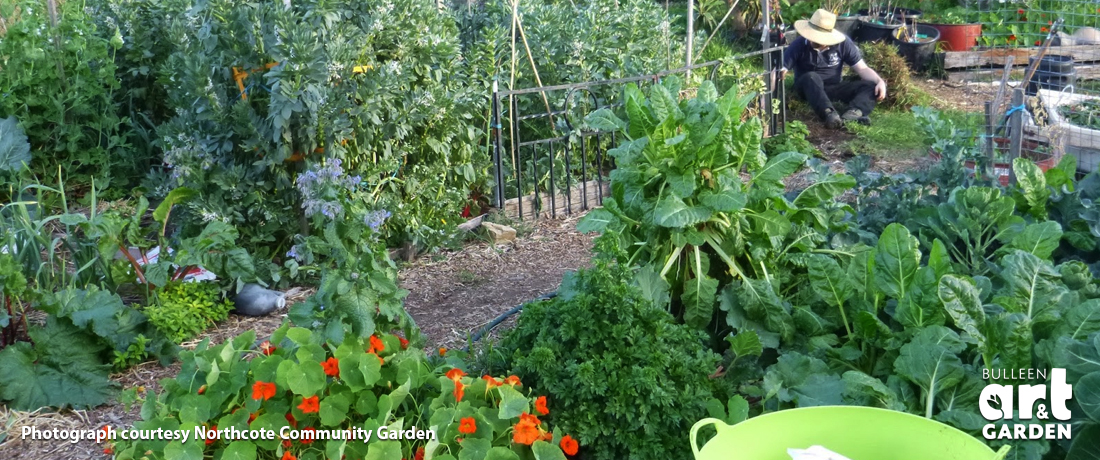
What is a community garden and what’s the fuss about? There are many fabulous advantages for your community to have a shared garden. If you’re curious, or thinking about getting involved, here are a few aspects of community gardening you might find interesting.
A community garden is usually a shared space on public land (or gifted private/crown land) where, through volunteered time, effort and resources, a bunch of community members set up a food garden. It’s maintained by volunteers, and the produce is enjoyed by those who volunteer their labour or resources. Sometimes excess produce is donated to groups or organisations within the community. The picture here is of the wonderful Northcote Community Gardens.
Types of community gardens
There are a few types of community garden. Shared gardens are found in a community space, like the community food garden in Daylesford (central Victoria). It is wedged on a piece of ‘reclaimed’ crown land between the library and a restaurant. The garden is maintained and harvested by a couple of core community members along with a lot of casual volunteers.
Then there are the community gardens where members are allocated their own plot within the space, like the Northcote Garden. Veg Out in St. Kilda is another like this… built on the old bowling green, and the land is administered by the local council for public use. The garden has 145 plots, plus communal spaces where food is grown to be shared. Most grow produce, but you’ll also see flowers and artwork integrated into the space.
The Merri Corner Community Garden in East Brunswick was born from keen locals making plans to build a community garden on a vacant block near the Merri Creek – land that, for various reasons, couldn’t be developed for housing. The council approved the groups’ plans a couple of years later, and the garden evolved to have 40 plots, plus communal spaces.
Great for individuals
Joining a community garden is a great idea if you’re short on space but want to grow and eat your own fresh fruit and vegetables. It’s also a great way to learn about gardening. You might turn up with some compost and a few seedlings to share and end up with cuttings, chicken manure and advice on how to grow carrots in your plot! A community garden is a living, working classroom, and working bees are great lessons.
A good shared garden fosters relationships and a sense of sharing and community, so they can be a valuable resource for people who are socially isolated or mentally unwell.
A community garden is also a nice place to relax! Quite a lot of them are open to the public. I love wandering through CERES in East Brunswick and having a sticky-beak at what the plot holders are growing in the community garden. People also join community gardens looking for inspiration to use in their own garden. You don’t have to be a plot holder – volunteers are always welcome at working bees, and usually you’ll receive something in return: produce, seeds, seedlings, mulch, advice…
Great for communities
A community food garden is a great step towards combating food insecurity and inequality in your local area. These gardens are almost always based on organic principles, so the produce will be full of all the nutrients… but not the chemicals. Certified organic food can be quite expensive to buy; so for those on a lower income, volunteering at a community garden can be a healthy and free (in return for labour!) food source. Not to mention the reduction in food miles!
Not everyone has a twenty in their pocket when they want to get out of the house with (or without) the kids – a community garden can be a great place to go where there’s no obligation to buy something or pay admission.
A well run community garden will be beautiful to look at and pleasant to be in and produce healthy food. Best of all they help to connect people in an increasingly disconnected world. Who wouldn’t want one in their community!
